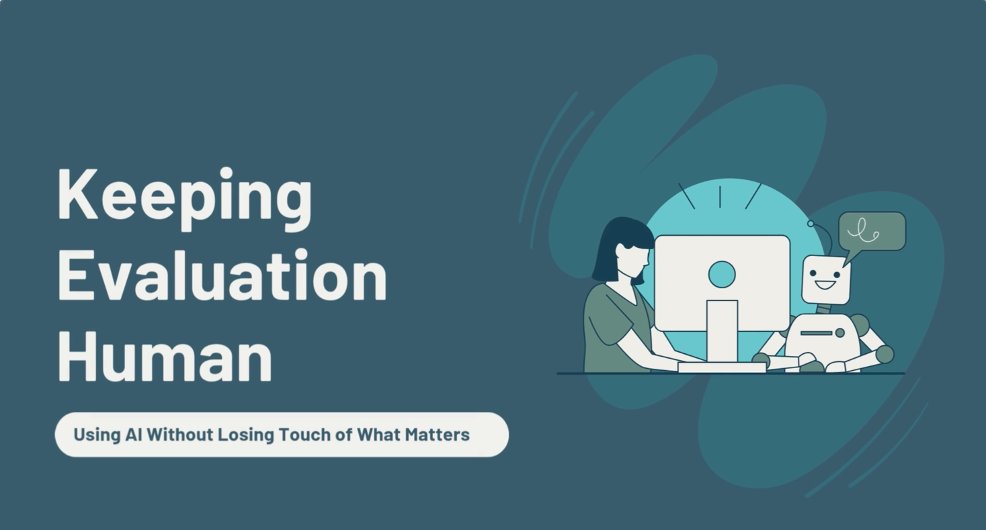How Evaluations Can Foster Learning: a Video Brief
From Compliance to Co-creation: How Evaluations Can Foster Learning Among Senior Leadership
In organizations with strong learning cultures, evaluation is not a tick-box exercise. It’s a critical tool for generating knowledge, guiding evidence-based decisions, and fuelling strategic and organizational evolution. When evaluations are embedded in such organizations, part of a shared vision, and adequately resourced, they transform from compliance exercises into moments that senior leadership actively champions. The best evaluations serve not only to assess performance, but to challenge assumptions, surface lessons, and drive continuous improvement.
But how do we at OpenCities ensure that evaluations actually facilitate learning among senior management teams?
Below we outline four Core Principles – and some practical tactics – for turning evaluations into reflective, inclusive, and ultimately transformative experiences for leadership.
1. Position Evaluation as Reflection, Not Judgment
Too often, evaluations are framed as performance assessments – something to be “gotten through” rather than learned from. To foster meaningful engagement from senior leaders, evaluations should be structured as opportunities for reflection on the “how” rather than delivering verdicts on the “what”.
2. Co-Create the Process with Senior Leaders
Evaluation is most impactful when it is co-owned by those it seeks to inform. As academics such as Bamberger (2008) have observed, participatory evaluation leads to greater utilization. Involving Senior Management early – in the design, priority-setting, and interpretation phases – not only increases buy-in but enhances the relevance and use of findings, including for learning purposes. This is where tools like Action Learning can shine: by posing real-time challenges and encouraging collaborative problem-solving, evaluation becomes an active, not passive, experience.
3. Create Safe, Constructive Spaces for Dialogue
Leadership engagement in evaluation requires more than good intentions – it demands trust, openness, and a willingness to listen. While factors like staff capacity, incentives, leadership, and organizational vision all shape how and why evaluations are conducted, it is a psychologically safe environment that enables honest dialogue about what worked, what didn’t, and why.
We’ve seen this first-hand in evaluations with several development giants we’ve worked with: when we invest time in building relationships, foster trust with stakeholders, and create incentives for meaningful engagement with evidence, we open the door to deeper reflection and learning.
4. Stay Use-Focused, Not Academic
Even the most rigorous evaluation will fall flat if it doesn’t meet the needs of its users. The goal isn’t just a credible report. It’s to deliver a process that yields actionable insights. The most effective evaluations are designed with a clear understanding of who the users are, what decisions they face, and how evidence can help.
Evaluation leaders must thus act as critical friends – not just technical experts, but trusted partners who help clarify the purpose of the evaluation, identify the decisions it should inform, and tailor methods accordingly. This approach helps embed learning within planning cycles, transforming evaluation from a retrospective exercise into a strategic asset for decision-making and adaptation.
5. Leverage Organizational Transitions as Catalysts for Learning
Periods of transition – such as the appointment of a new CEO, Director, or other senior team member – often create uncertainty, but they also present a powerful opportunity: the chance to reflect, reorient, and reset. Evaluations conducted during these windows can offer a timely and structured way to assess what’s working, what’s not, and where to go next.
Rather than viewing leadership turnover as a disruption, organizations with strong learning cultures use it as an impetus to take stock and steer strategically. Evaluation in these moments provides incoming leaders with an evidence-informed understanding of the landscape they’re entering and helps teams align around refreshed priorities.
By intentionally capitalizing on these inflection points, evaluation can serve as a bridge – connecting past experience with future direction and reinforcing a culture of continuous learning and strategic responsiveness.
Tactics to Embed Learning in Evaluations
Bringing the Core Principles to life requires being thoughtful about design and facilitation. The following tactics offer practical entry points for making evaluations about learning not audit.
1. Adopt a Reflective Model to Structure Evaluation Conversations
Use structured reflective frameworks – like Gibbs’ Reflective Cycle or our own OVID approach (Observations, Views, Interpretations, and Decisions) – to guide conversations beyond surface-level reporting. These models encourage leaders to unpack experiences through critical questions such as: What happened? How did you feel about it? What sense can we make of the situation? What could we do differently next time? Embedding these models within evaluation workshops or leadership sessions helps shift the tone from defensiveness or defensible results toward inquiry, insight, and intentional learning.
2. Incorporate Peer Input to Broaden Perspective
Evaluation shouldn't be a top-down exercise. Encouraging peer-to-peer feedback – across functions, departments, or regions – in Focus Group Discussions (FGDs) helps surface insights that may be missed in hierarchical reviews. This peer input fosters shared ownership of learning, builds understanding across teams, and supports a more collaborative interpretation of evidence.
3. Engage Skilled Facilitators to Enable Deep Dialogue
Effective evaluation conversations often require someone to hold the space, ask difficult but constructive questions, and help leadership teams navigate complex group dynamics. Facilitators play a vital role in encouraging psychological safety, reconciling and interpreting views, surfacing assumptions and blind spots, reframing failures or conflicts as learning opportunities, and keeping discussions anchored in evidence and practical.
Conclusion: A Learning-Driven Future
Strategic evaluations should not merely assess performance – they should help shape it. In this sense, evaluations become coaching opportunities for Senior Management – chances to pause, reflect, adapt, and grow. Just as “every great player needs a coach” – even generational talents like Lionel Messi or Serena and Venus Williams – senior leaders benefit from structured, evidence-informed reflection that surfaces insight and drives improvement.
By embedding reflection, co-creation, safe dialogue, and user-centered design into the evaluation process, we help organizations turn these moments into catalysts for smarter strategies, stronger cultures, and more resilient futures.




